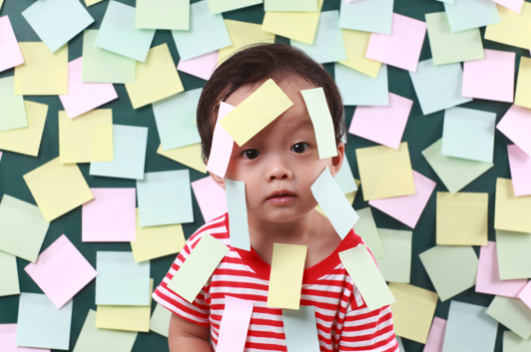While attending a presentation given by Dr. James Webb and Dr. Nicole Tetreault at this year’s SENG conference in San Diego on the topic of “Feeling Color: Insight into a Bright Mind and Gifted Diversity,” I heard him say something that affirmed a feeling that has been creating discomfort for me for a while. He said, “diagnosis can be character assassination for children.” After the talk, I approached him and asked him to write more about this idea. Dr. Webb was a pioneer in the gifted and twice-exceptional community who sadly passed away a few days after this conference. I cannot presume to know the clinical observations and wisdom he would have shared with us, but I’ll pick up the torch and share my own thoughts on the topic of diagnosis and children.
A natural place to begin is to ask, what is the function of a diagnosis? And, how should information about diagnosis in children be shared or handled?
Therapists utilize the Diagnostic and Statistical Manual of Mental Disorders, published by the American Psychiatric Association, to determine whether a set of symptoms or behaviors meets the criteria for diagnosis as a psychological disorder. Diagnosis affects everything from the interventions that your therapist selects for treatment to medications that may be prescribed for your child.
In fact, the diagnosis can be the gatekeeper for the services your child receives or does not receive. Take for example; many therapists do not have the expertise or comfort level with diagnosing autism spectrum disorders. This is often a tremendous disservice to these children because as a consequence of not receiving the accurate diagnosis the appropriate multidisciplinary treatment is denied to the child. Thus, leaving areas of communication, social learning and sensory processing untreated for that child.
Similarly, many gifted and twice-exceptional children often use their intellectual abilities to compensate for their weaknesses and/or areas of deficit so they may look like oppositional, disorganized underachievers, inattentive, presumed to be lazy and unmotivated, and so forth. When in fact their challenges may be due to fine motor skill delays, executive functioning issues, dysgraphia, dyscalculia, sensory processing disorder or a host of other undiagnosed disabilities. Consequently, a range of health care professionals also often misdiagnose these children.
The most common mis-diagnoses are: Attention Deficit Hyperactivity Disorder (ADHD), Oppositional Defiant Disorder (OD), Obsessive Compulsive Disorder (OCD), and Mood Disorders such as Cyclothymic Disorder, Dysthymic Disorder, Depression, and Bi-Polar Disorder. These common mis-diagnoses stem from an ignorance among professionals about specific social and emotional characteristics of gifted children, which are then mistakenly assumed, by these professionals to be signs of pathology.
In some situations where gifted children have received a correct diagnosis, giftedness is still a factor that must be considered in treatment, and should really generate a dual diagnosis. For example, existential depression or learning disability, when present in gifted children or adults, requires a different approach because new dimensions are added by the giftedness component. Yet the giftedness component typically is overlooked due to the lack of training and understanding by health care professionals” (Webb & Kleine, 1993).
In consideration of the comprehensive assessment that must be completed, the risk for inconsistencies in the diagnosis, and the degree of expertise required in the treatment of children, it should be of no surprise that diagnosis should be handled with the utmost care and discretion. In fact, it may be most useful to develop the habit of thinking about children in a holistic fashion as whole individuals not as a label driven by diagnosis. Working from the paradigm of a profile may allow the therapist to broaden the lens and assess the child as a whole. In short, to look beyond pathology and consider the function of the symptoms/behaviors in order to understand how the brain as a whole is working, how the behavior helps the child cope with external demands, and consider the trajectory of development, wellness of mind and body, as well as also identify areas of strength and passion.
We may then be better prepared to collaborate with parents and guide them so they may have intentional and informed conversations with others about their child, and refrain from offering a diagnosis or a label for which the other person may have no context, no prior knowledge or worse yet, may have misinformation. Along these lines, it may not only be unhelpful, but even harmful to share a diagnosis with children, especially a complex diagnosis, which may have parts that no longer fit after some extensive treatment. The child will grow and change. What he or she most needs is to understand who he or she is as a whole person, and how he or she learns in order to help navigate the world around them.

